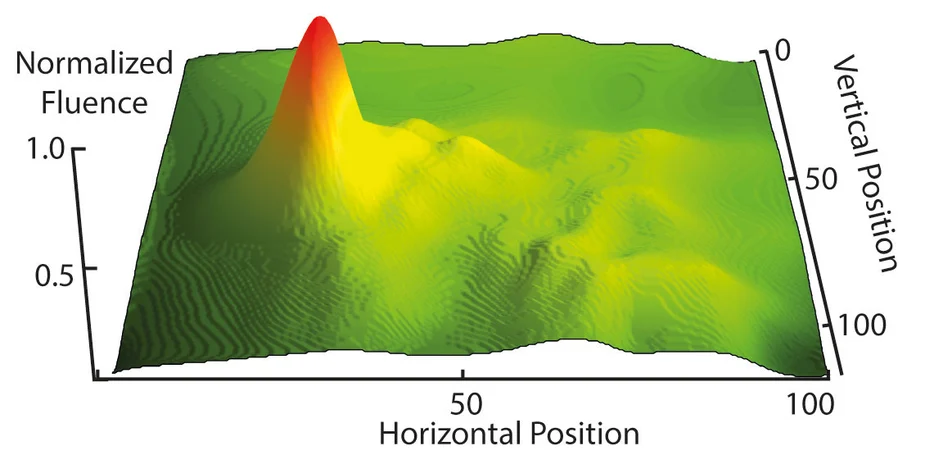Are rogue waves predictable?
MBI researchers compare optical waves with ocean waves

A comparative analysis of rogue waves in different physical systems comes to the surprising conclusion that these rare events are not completely unpredictable.
Metereological events often prove to be rather unpredictable, i.e., the "storm of the century" may well prove to be surpassed by yet another storm just in the subsequent year. From an insurance point of view, resulting damage often proves to be be well beyond any statistical prediction. Such phenomena generally underlie extreme value statistics, featuring a prevalent appearance of extreme events and contrasting long-term observations of rather normal events in the respective system. Rogue waves, also known as freak waves, are yet another example for such dynamics. While being extremely rare events, their appearance may cause considerable damage to the hull of ships.
The precise origin of rogue waves is still disputed. Moreover, it is unclear whether rogue waves can be predicted. Maybe, it is possible to issue a last-instant warning from observations of recorded wave heights? Do characteristic patterns exist that herald the impact of such a rogue wave? Unfortunately, there are only a few recordings of such ocean freak waves. Consequently, it may well take many more decades to answer those questions based on oceanic observations only. Nevertheless equivalent physical systems exist, which allow an exploration of this aspect at a substantially more solid statistical basis.
This is the point where the work of Simon Birkholz and coworkers sets in. Based on a statistical analysis of data in three different physical systems, the group conducted a detailed analysis on the predictability and determinism in the respective system. This analysis included original data of the famous New Year’s Wave, which hit the Draupner platform on January 1, 1995 as well as results of the Jalali group at the University of California at Los Angeles (UCLA), and finally data in a multifilament scenario measured at the Max-Born-Institut in Berlin. In the multifilament system, one can directly observe the rogue waves as short light flashes in the intensity profile. The wave height of the ocean system corresponds to light intensity in the optical systems.
The surprising result of this comparative analysis is that rogue events appear to be very much predictable in certain system, yet are completely stochastic and therefore unpredictable in others. In other words, rogue wave statistics does not enable any conclusion on predictability and determinism in the system. It is simply not true that rogue events per se appear out of nowhere and disappear without a trace. Ocean waves play a particular role here. Other than previously assumed, they are not completely stochastic. Therefore it is not true that they “appear out of nowhere and leave without a trace”, which has often been claimed to be a characteristic feature of ocean rogue waves. Nevertheless, practical predictions are still far away and may only enable a last-second warning of these “monsters of the deep”.
Original publication:Physical Review Letters 114, 213901 Predictability of Rogue Events
Simon Birkholz, Carsten Brée, Ayhan Demircan, and Günter Steinmeyer (Editor’s suggestion)
Contact:
Dr. Günter Steinmeyer
Max-Born-Institut (MBI)
Max-Born-Str. 2A, 12489 Berlin
Tel.: 030 / 6392-1440
steinmey(at)mbi-berlin.de
Simon Birkholz
Tel.: 030 / 6392-1448
birkholz(at)mbi-berlin.de